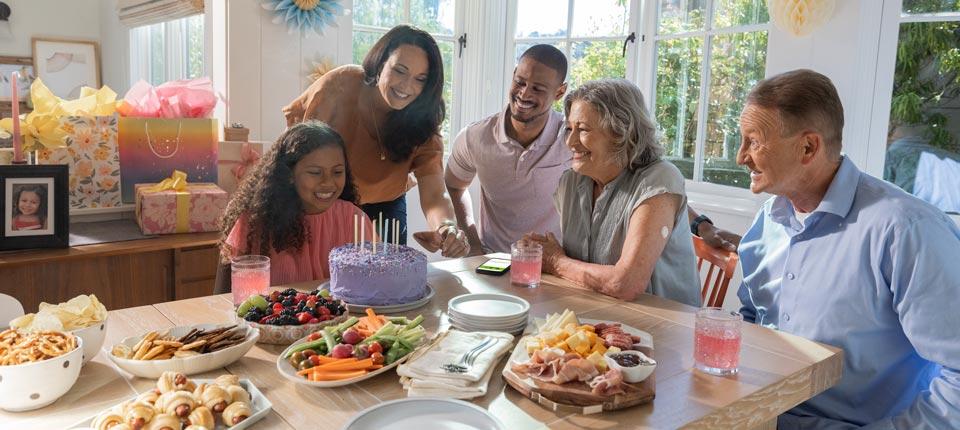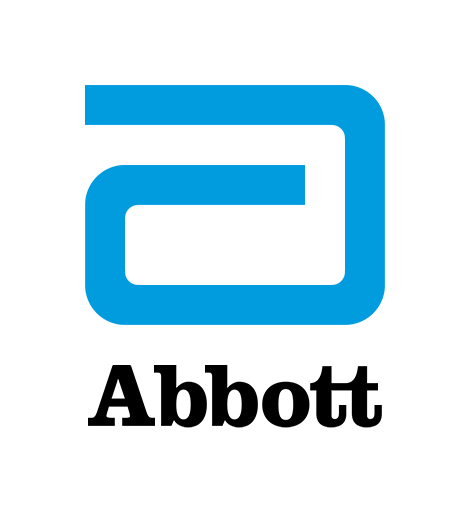Sharing the Access Code to Help Open Up Diabetes Care
We’re working to expand access and get our life-changing continuous glucose monitoring technology to more people.

Imagine having $1 million locked in a safe. Pretty great news, unless you don’t have the key. If you can’t get to that treasure, it may as well not even exist.
The same is true of innovative health care, especially when it comes to managing diabetes. It’s only as valuable as it is accessible.
What do you do? You find a way to crack that safe.
So, while we are excited that our FreeStyle Libre continuous glucose monitoring technology is now improving the lives of more than 5 million people living with diabetes1 — by eliminating routine fingersticks2, providing real-time access to continuous glucose numbers, and easing the constant worry that plagues so many people — this number is merely a “nice start.”
If you’re curious about why we’re passionate about accessibility, talk to Deon Groomes, a construction worker in Columbus, Ohio, who is living with Type 2 diabetes.
“It is like having an angel on my arm,” Groomes said. “I don’t have to worry about my numbers. They are right there, whenever I need them.”
Grooms is grateful to receive access to the life-changing technology through the U GOT THIS PROGRAM as part of the American Diabetes Association’s® Health Equity Now platform sponsored by Abbott.
“We believe the best healthcare solution is the one that helps the most people,” said Jared Watkin, senior vice president of Abbott’s diabetes care business. "We put our customers at the heart of everything we do and want our technology accessible to everyone who needs it.”
Simply put, we are focused on helping as many people as possible. This is why Abbott designed the FreeStyle Libre system with access and affordability in mind from day one.
Check Out the Data
When it comes to managing diabetes, there are a lot of people out there who could use help.
According to the JDRF Type 1 Global Index, 8.7 million people were living with Type 1 diabetes globally in 2022, with the average number of healthy years lost per person (if diagnosed at age 10) being 32 years.
The same index also notes 3.86 million “missing people” — the estimated number who died early as a result of complications from diabetes. These metrics highlight the true human cost of the condition.
And this is just a fraction of people who can benefit from using our life-changing technology. The International Diabetes Federation estimates that approximately 537 million adults are living with diabetes, and more than 90% of them have Type 2 diabetes.3
Expanding Coverage
In April 2023, the U.S. Medicare program expanded access to continuous glucose monitoring systems like the FreeStyle Libre 2 system and the FreeStyle Libre 14-day system for insulin-using4 Medicare beneficiaries with diabetes, removing the prior requirement of multiple daily insulin injections.
This means that Medicare beneficiaries with diabetes and a history of problematic hypoglycemia5 may also be eligible to have their FreeStyle Libre 2 system or FreeStyle Libre 14-day system covered for reimbursement.
Great news, but it gets better. And more international.
In June, the French health authorities granted the expansion of reimbursement coverage of FreeStyle Libre 2 system to include all people who use insulin as part of their diabetes management. France is the first country to expand national reimbursement of Abbott’s world-leading FreeStyle Libre technology to people with diabetes who use once-daily (basal) insulin.
Last year, continuous glucose monitors were approved for provincial reimbursement in Quebec, Prince Edward Island, and Manitoba in Canada. Also, the Japanese Ministry of Health, Labor, and Welfare approved the expansion of reimbursement coverage for the FreeStyle Libre system to include all people with diabetes who use basal insulin.
"If there is a location that has a person living with diabetes, we want our FreeStyle Libre system there,” said Alexander Seibold, medical director for Abbott’s Diabetes Care business in Europe, Middle East and Africa. “Access improves health and can save lives.”
Diabetes is one of the most expensive chronic conditions to manage. According to the American Diabetes Association (ADA), medical expenditures for people with diabetes is $16,752 a year, or 2.3 times more than for people without diabetes.6
We have the opportunity to improve the lives of millions of people living with diabetes with early, affordable access to life-changing technology. Real-world and clinical data show that FreeStyle Libre technology helps people with diabetes improve their glucose control, lower their HbA1Cs, decrease diabetes-related hospital admissions, and improve their quality of life. It also lowers diabetes-related costs for people and health systems.7
We’ll continue to partner with organizations, local communities, and governments to advance equity, giving as many people as possible their key to unlocking healthier, better lives.
The view expressed is not intended to be used for medical diagnosis or treatment or as a substitute for professional medical advice. Individual symptoms, situations, and circumstances may vary.
Deon Groomes is a participate in the U GOT THIS PROGRAM as part of the American Diabetes Association® Health Equity Now platform sponsored by Abbott. All trademarks are the property of their respective owners.
References
1 Data on file, Abbott Diabetes Care. Data based on the number of users worldwide for the FreeStyle Libre portfolio compared to the number of users for other leading personal use, sensor-based glucose monitoring systems.
2 Data on file, Abbott Diabetes Care. Fingersticks are required for treatment decisions when you see Check Blood Glucose symbol, when symptoms do not match system readings, when you suspect readings may be inaccurate, or when you experience symptoms that may be due to high or low blood glucose.
3 Facts & figures - International Diabetes Federation (idf.org)
4 Centers for Medicare & Medicaid Service Local Coverage Determination Coverage Guidance L33822 from the Medicare Administrative Contractors https://www.cms.gov/medicare-coverage-database/view/lcd.aspx?LCDId=33822. Published and accessed on March 2, 2023. For coverage of a CGM, patients must be diagnosed with diabetes; have sufficient training on using a CGM based on their healthcare provider's conclusion; be prescribed a CGM device in accordance with its FDA indications for use; use insulin or have a history of problematic hypoglycemia; have seen their healthcare provider in-person or through a Medicare-approved telehealth visit to evaluate their diabetes control within six months before the CGM was ordered; and every six months following their initial CGM prescription must go in-person or have a Medicare-approved telehealth visit with their healthcare provider to document their CGM adherence and diabetes treatment plan.
5 Centers for Medicare & Medicaid Service's definition of problematic hypoglycemia is: recurrent (more than one) level 2 hypoglycemic events (glucose <54mg/dL (3.0mmol/L)) that persist despite multiple (more than one) attempts to adjust medication(s) and/or modify the diabetes treatment plan; or, a history of one level 3 hypoglycemic event (glucose <54mg/dL (3.0mmol/L)) characterized by altered mental and/or physical state requiring third-party assistance
6 People with diagnosed diabetes incur average medical expenditures of $16,752 per year, of which about $9,601 is attributed to diabetes. On average, people with diagnosed diabetes have medical expenditures approximately 2.3 times higher than what expenditures would be in the absence of diabetes. The Cost of Diabetes | ADA

